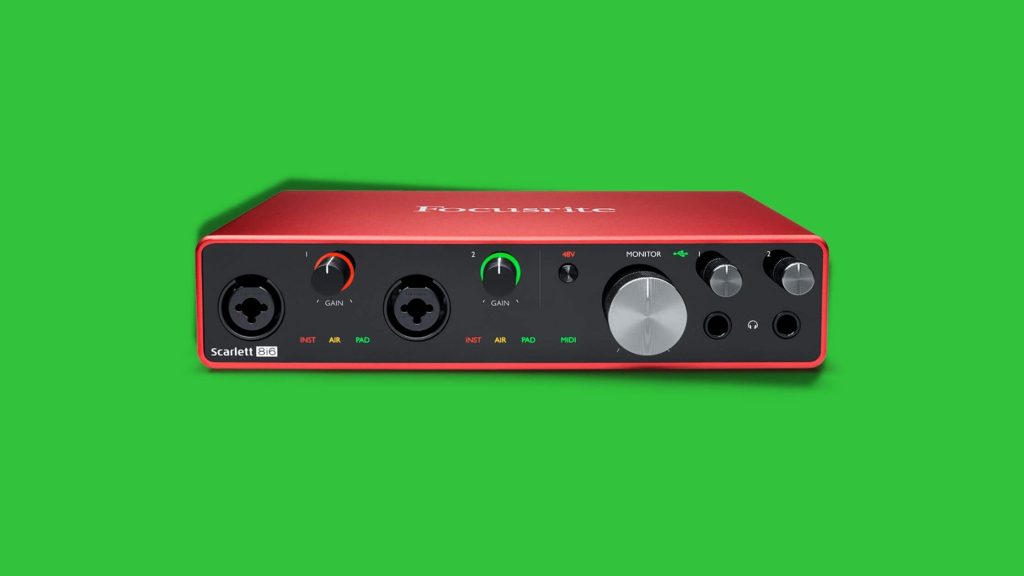What is Phantom Power?
How Do Microphones Work?
What Are The Different Types of Microphones and How Do They Work?
Microphone Pick Up Patterns Explained
What is Phantom Power for Microphones?
Phantom power is what we use to amplify the electrical signal that your condenser mic has converted from an acoustic signal.
Condensers use a capacitor that converts sound waves into electrical current. Sound waves vibrate a diaphragm, which is normally a gold-sputtered mylar (polyester film), that’s stretched in front of a metal plate, which we call the backplate.
As the diaphragm vibrates, the distance between the diaphragm and the backplate changes, which changes the capacitance of the mic. This converts the acoustic signal into an electrical one.
Condenser mics need 48V phantom from audio interfaces power because the electrical signal needs to be amplified before it can leave the mic!
Why Do We Need Phantom Power?
You & your friends are a budding band and you want to record your first demo.

You choose to bag yourself a Focusrite Scarlett 6i6 for an audio interface with enough inputs, a Rode NT1-A microphone for your lead singer, 2 Rode M5’s for your drummers’ hats, as well as 4 Shure SM57′s for their snare and kick drum, as well as your guitarist and bassist.
Out of all of these microphones, 3 of them need phantom power. You’ve bagged yourself the active, dynamic, SM57’s for your loud sound sources such as guitar, bass, kick and snare drums. So, your Rode NT1-A, a large-diaphragm condenser, and two Rode M5’s, small-diaphragm condensers, are your mics that need phantom power.
You’ve noticed that your vocals and hi-hat recording tracks are pretty much non-existent. Your bass, guitar, kick & snare are dominating the mix. Why is that?
The answer is phantom power. You’ve not pressed that small button that says 48V. This means that your condenser mics have not received enough direct current to convert the acoustic signals of vocals & hi-hats into electrical ones.
Be careful with this magic button, though. You need to make sure that your recording isn’t about to start clipping. Is it time you took a trip into the world of gain staging?
What is Phantom Power 48V?
Phantom power, which is often listed as +48V or P48, was discovered by accident in 1966.
Neumann GmbH, a professional recording microphone manufacturer, was contracted by the Norwegian Broadcasting Corporation to supply transistorized microphones (transistors switch or amplify electronic signals) that could run off of their studios’ 48V power supply.
With that in mind, phantom power was designed to give microphones power without the use use of external power supplies that were too bulky.
Phantom power is a way of sending needed DC electrical current through balanced XLR cables. This voltage powers the mic’s diaphragm and its internal amplifier.
When phantom power is switched on via your audio interface, a direct current is sent through the XLR cable and brings the voltage that powers the microphone and amplifies the electrical signal.
If you’re not so into recording your own sound sources and are looking for some exciting new samples, Mixxed has everything your heart desires. From one-shots, melodies to loops – all for less than $3 a month!
